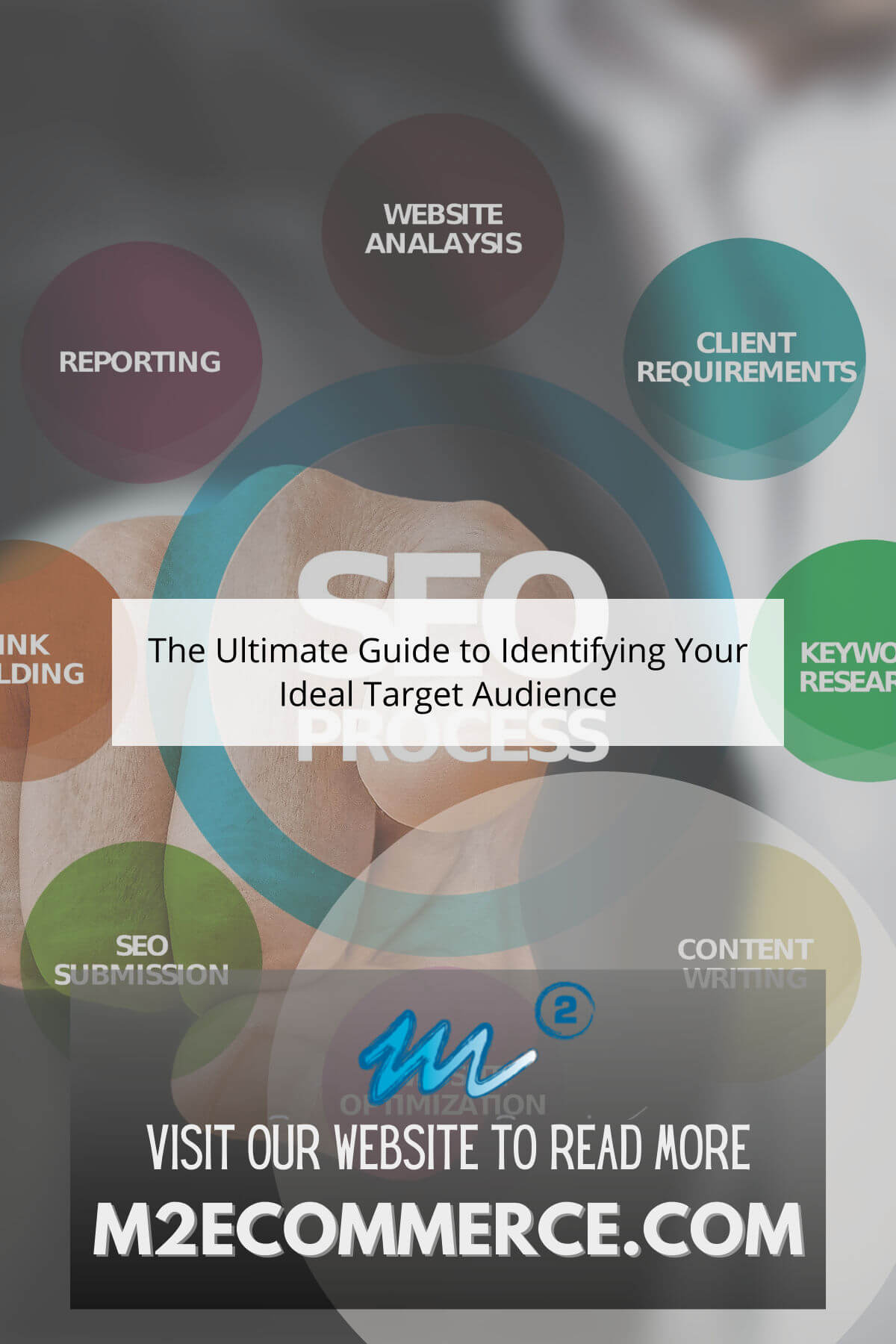Identifying your ideal target audience is essential to the success of any business. It’s the key to attracting and connecting with the right people who are most likely to be interested in your product or service.
As a content marketing specialist, I’m here to provide you with the ultimate guide to identifying your ideal target audience. This guide will walk you through the process of understanding who your target audience is, what motivates them and how you can best reach them.
We’ll also explore why it’s important for you to take control of this process and how doing so will help you achieve success in reaching your desired goals. With this guide, you’ll have all the information you need to get started on finding and engaging with your perfect customer base!
Why Does Identifying Your Target Audience Matter?
Identifying your target audience is like riding a wave. It’s the key to marketing success and the first step in creating a long-term strategy that aligns with current market trends.
Without segmentation strategies, your brand will be lost amid the chaos of modern advertising and digital media.
As content marketing specialists know, the most successful campaigns are focused on individuals who have a subconscious desire for control.
Understanding who makes up your target audience is essential for crafting personalized messages that are both effective and appealing.
To successfully reach this desired demographic, you must understand their motivations, interests, and values.
Only then can you create an authentic connection with them that resonates beyond traditional marketing techniques.
As you continue to refine your message, consider how it reflects the needs of your ideal customer.
With this approach, you’ll be able to maximize engagement and convert more prospects into loyal customers.
Who Makes Up Your Target Audience?
Identifying your target audience is a crucial step in executing any successful marketing strategy. As you begin to narrow down who your ideal customer is, it’s important to consider both demographic and psychographic factors.
Demographics are the tangible traits of an individual, such as age, gender, location and income level. Acknowledge the diversity within these categories by understanding that each person will have unique needs and experiences based on their background.
Creating content that appeals to multiple generations or genders can help broaden your reach when building relationships with potential customers. Psychographic factors involve more intangible characteristics, such as personality type and interests. Knowing what motivates people on a deeper level can help you create a more personalized message that resonates with them.
Here are five tips for discovering what might motivate your target audience:
- Ask questions to uncover common interests and hobbies
- Research the types of activities they enjoy engaging in
- Look into which social media platforms they use most often
- See what type of content they consume online
- Analyze how they interact with other brands online
Having an understanding of how demographics and psychographics shape your target audience will enable you to craft a message that captures their attention and inspires action. From there, you can begin to explore what motivates them in order to build meaningful relationships with potential customers.
What Motivates Your Target Audience?
Understanding what motivates your target audience is key to connecting with them and making sure your message resonates.
For example, social status can be a powerful motivator, so it’s important to understand what kind of status your ideal customer may be looking for.
Similarly, financial security is a major motivator for many, so consider how your product or service can provide that security.
By understanding these motivations, you’ll be able to create a message that resonates with your target audience and drives them to take action.
Social Status
It’s easy to assume that all your target audience wants is money and social recognition, but that’s not always the case.
Social status plays a huge role in influencing your ideal customer. Consumers of all income levels are constantly on the lookout for ways to increase their standing among their peers.
Whether it’s through carefully crafted posts on social media or being spotted with the latest trends, people are looking for any way to make a statement about who they are and what they stand for.
Your business can tap into this trend by creating campaigns highlighting how your products or services can help customers improve their social standing.
Think about how you can leverage influencers to showcase the value of your products and draw attention to special offers. Also consider how you could use sponsored content or exclusive deals as a way to reward customers who share their experiences with friends and family members on social media.
This kind of engagement will give customers an incentive to spread the word about your business, while also helping them feel like they’re part of something larger than themselves.
With thoughtful campaigns targeting the right audience, you can provide them with an avenue to express themselves and achieve their desired level of social status.
Financial Security
Financial security is a huge motivator for customers, and it’s important to make sure that your campaigns reflect that.
You can appeal to the desire for control by highlighting the saving and investment options that your products or services offer. Showcase any exclusive deals or discounts that can help customers reach their financial goals faster.
With these strategies, you can demonstrate how your business can help them achieve financial freedom and peace of mind in their lives.
In addition to emphasizing savings opportunities, you should also consider how you can provide customers with more control over their spending habits. This could include features such as budgeting tools, reward programs, or flexible payment options.
By giving them more options on how they use their money, you’ll be able to show them how much power they truly have over their finances.
Incorporating these elements into your campaigns will create an atmosphere of trust and responsibility between you and your customers. It will also give them more confidence in their ability to manage their money effectively and stay on track with their financial goals.
How To Research Your Target Audience
Now that you have a better understanding of what motivates your target audience, the next step is to begin researching and gathering data about them. To get an accurate picture of who your ideal customer is, it’s important to look at all the available information to determine how best to segment markets and find trends. As the old saying goes, “knowledge is power” so use this knowledge to develop a comprehensive understanding of your target consumer.
In order to make sense of the data you collect, it’s beneficial to create a table or spreadsheet with two columns: demographics and psychographics. Demographic information includes things like age, gender, marital status, income level, and education level while psychographics refer to interests, values, beliefs , lifestyles , and attitudes. By analyzing both types of information together, you will gain insight into the behavior patterns and preferences of your target audience.
Once you have created a well-rounded profile for each segment of customers in your market, it’s time to start crafting your target audience persona. This persona should contain key demographic characteristics as well as some unique identifying traits that will help inform all areas of marketing strategy from website design to product development.
Crafting Your Target Audience Persona
Developing a target audience persona is a key component of successful target audience identification. It helps to create an identifiable profile of your ideal customer, enabling you to personalize your marketing efforts and speak directly to the needs of that specific audience.
A well-crafted persona should include demographic details such as age, gender, marital status, geographic location and personal interests. To get started on this process, start by listening intently to the feedback you receive from customers and other stakeholders. Take note of any demographic trends that emerge from their conversations and try to draw connections between these trends and potential audiences.
Next, consider how your product or service fits into your target audience’s lifestyle. Look for opportunities to create meaningful relationships with them by customizing content that speaks directly to their unique interests or preferences. Ask yourself questions like ‘what value can I provide my customers’ or ‘how can my product improve the lives of my customers.’
Research the competition in order to identify any gaps that exist in what they offer versus what you can offer. Once you have identified areas where you can make a difference for your customers, begin building out personas based on those insights.
Utilize data sources such as surveys, interviews or focus groups to gain further insight into how different audiences interact with your product or service. Identify common traits among customers who are most likely to purchase from you and use this information when crafting personas that accurately reflect the needs of your ideal customer base.
With this valuable intelligence in hand, you’ll be well-positioned to move onto the next step: analyzing your target audience data.
Analyzing Your Target Audience Data
Now that you have crafted a target audience persona, it’s time to analyze the data. Understanding the data behind your target audience is essential in creating effective marketing strategies. Surveying trends and demographic breakdowns will provide insight into what messages will resonate with them best.
Start by surveying industry trends related to your product or service. Take note of any changes that may impact your strategies or tactics going forward.
Also, use surveys to understand the motivations and goals of potential customers. This will help you craft messaging that speaks directly to their needs and wants.
Next, take a deeper look into the demographics of your target audience such as age, gender, location, interests, and more. Consider how these factors can influence their buying decisions and help refine your message for maximum impact.
Knowing who you are targeting specifically can also be helpful when reaching out through social media channels or other digital marketing methods.
By analyzing this data, you can gain valuable insights into who your ideal customer is and how they interact with different platforms online. With this knowledge in hand, you are now equipped to reach out and engage with your target audience in a more meaningful way than ever before!
Reaching And Engaging Your Target Audience
Once you’ve identified your ideal target audience, it’s time to reach and engage them. To do this, you must use a combination of strategic tactics that are tailored to your specific goals.
To effectively reach and engage with your target audience, consider the following elements:
- Listen to feedback – Pay close attention to what your target audience is saying and what they’re responding to. Take their feedback on board and use it to refine your marketing efforts and create content that resonates with them.
- Focus on social media – Social media is essential for any successful marketing strategy. Use it to interact directly with your target audience, build relationships with them, and create shareable content that will draw more people in.
- Reach out to influencers – A great way to get the word out about your brand is by partnering with key influencers in the industry who can help spread the message further. Establish relationships with these influencers and leverage their influence to increase brand awareness and engagement among your target audience.
By utilizing these elements as part of an effective outreach strategy, you can reach more people than ever before and make sure that everyone knows about your business or product. With the right approach, you’ll be able to successfully engage with existing customers while also expanding into new markets – all without breaking the bank!
Frequently Asked Questions
What Are The Benefits Of Identifying Your Target Audience?
Identifying your target audience can be a powerful tool for businesses, offering potential cost savings, increased brand loyalty and time savings.
With market segmentation, you can develop an understanding of customer preferences and tailor your offerings to their needs.
Additionally, the use of social media allows you to reach specific customer segments and create personalized messages that are more likely to be effective.
In short, understanding your target audience is essential for any successful marketing campaign – it pays off in both tangible and intangible rewards.
How Do You Reach Your Target Audience In Different Platforms?
Are you looking to reach your target audience in the most effective way?
With the right content marketing strategy and social media presence, you can quickly and easily connect with your ideal customers. Having a strong presence on multiple platforms will allow you to track engagement, gain insights into customer behavior and create targeted campaigns that will help you reach your desired audience.
To ensure success, craft content that speaks directly to your target’s needs while also appealing to their desire for control. With this approach, you’ll be well on your way to reaching the right people at the right time.
What Are The Best Practices For Analyzing Your Target Audience Data?
Analyzing your target audience data can be overwhelming, but it doesn’t have to be. Utilizing the right practices will help you identify and segment your ideal customer base.
To get started, consider conducting demographic research and breaking down your audience into distinct segments. This will allow you to make decisions based on real-time data that is tailored to their wants and needs.
Additionally, keeping a pulse on changes in the market can help you stay ahead of the competition and keep your target audience engaged.
How Do You Regularly Monitor And Update Your Target Audience Persona?
Understanding and regularly monitoring your target audience persona is key to successful content marketing.
In order to do this, you need to be tracking engagement metrics, such as website visits, downloads, and social media followers.
Additionally, through social listening tools, you can monitor conversations and sentiment surrounding your brand.
This will help you identify the traits which make up your target audience and ensure that the content you’re producing is on-brand and resonates with them.
Knowing who you’re speaking to and what they expect from your brand helps to build trust and loyalty amongst customers – vital for any business looking to succeed in the digital landscape.
How Can You Ensure Your Content And Messaging Resonates With Your Target Audience?
Creating content that resonates with your target audience isn’t easy but it is essential.
To ensure your content and messaging is successful, start by creating a connection with them.
Focus on addressing their needs and how you can solve their problems.
Keep in mind that the content should be engaging, allowing them to feel like they have control over the information presented.
This way, you’ll be able to create content that resonates with your target audience and ultimately drives conversions.
Conclusion
Having a clear understanding of your target audience is key to the success of any marketing strategy. Knowing who you’re targeting, how to reach them, and what resonates with them can help you create content that will engage and convert them into loyal customers.
One interesting statistic you should be aware of is that 80% of consumers are more likely to make a purchase from a brand they feel connected to.
So having a well-defined target audience persona is essential to building relationships with potential customers and growing your business.
Discover your ideal target audience today – let our experts guide you!
With years of experience, our agency has helped countless clients identify and reach their target audience. From market research to persona creation, we have the skills and expertise to help you achieve your digital marketing goals. Contact us now for a free consultation.



